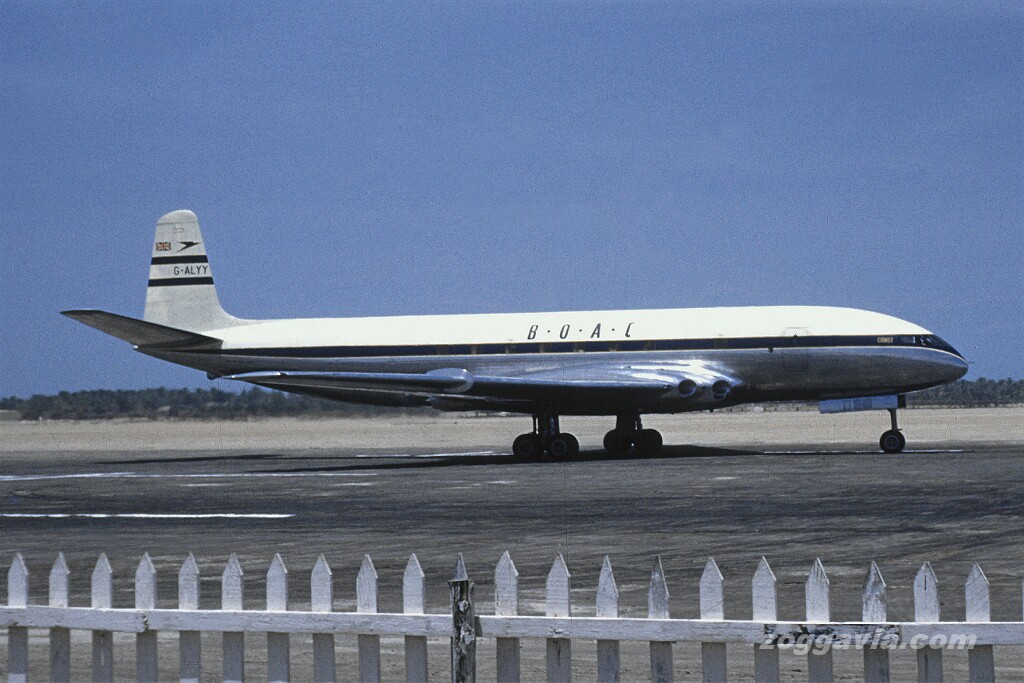

The Comet, registered G-ALYY, was under the command of Captain Wilhelm Karel Mostert, with First Officer Barent Jacobus Grove, Navigator Albert Escourt Sissing, Radio Officer Bertram Ernest Webstock, and Flight Engineer August Ranwald Lagesen. Air Hostess Pamela Lucia Reitz and Flight Steward Jacobus Bruwer Kok were in the passenger compartment with the 14 passengers.
As the airliner climbed toward 35,000 feet (10,668 meters), they made several position reports. Last heard from at 1907 UTC, radioing an expected arrival time at Cairo, the Comet disintegrated in flight and fell into the Tyrrhenian Sea. Searchers found a debris field and floating bodies the next day near the volcanic island of Stromboli. All 21 persons aboard were killed.
This was the second catastrophic failure of a DH.106 in just three months. BOAC immediately grounded its entire Comet fleet, and the British Air Ministry revoked the airliner’s certificate of airworthiness. Production of the airliner at de Havilland was halted.
The first crash had been presumed to be a result of an in-flight fire, and the second, an uncontained turbine engine failure. But an extensive investigation eventually determined that the cause of both crashes was the in-flight break up of the fuselage pressure hull. “Owing to the absence of wreckage, we are unable to form a definite opinion on the cause of the accident near Naples, but we draw attention to the fact that the explanation offered for the accident at Elba [Comet G–ALYP, 10 January 1954] appears to be applicable to that at Naples.” ¹ Metal fatigue of the fuselage was caused by the repeated expansion and contraction of pressurization cycles. Cracks in the aluminum skin formed at stress points at the corners of the passenger compartment windows and then spread outward. This resulted in catastrophic explosive decompression.
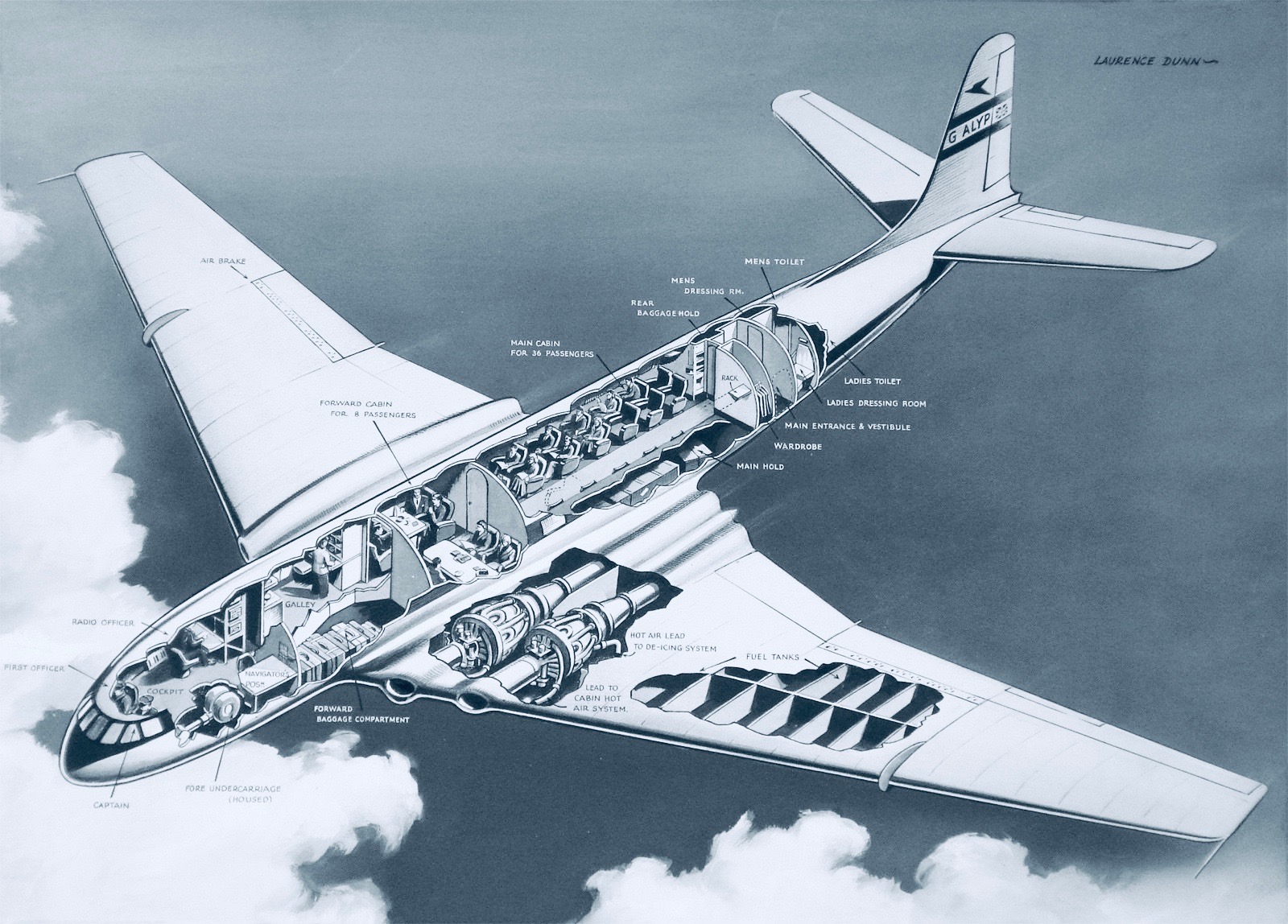
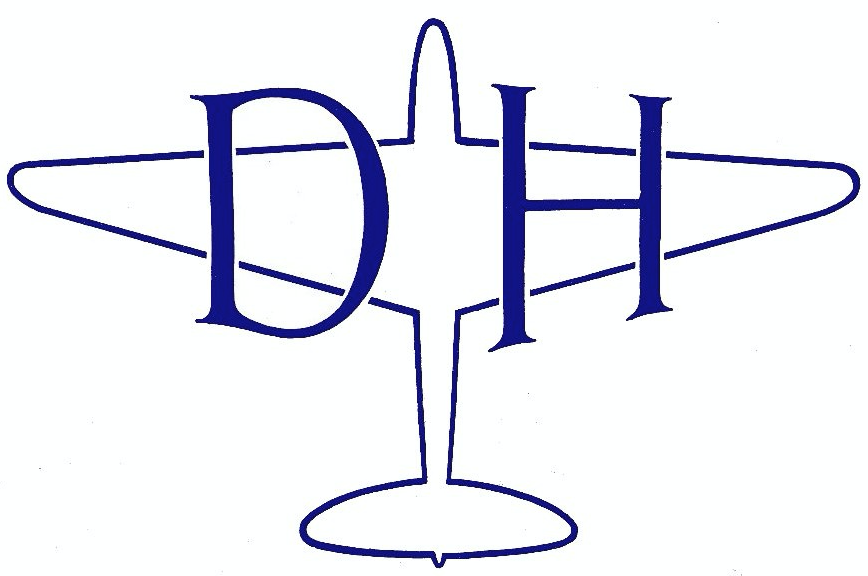
The airplane was 93 feet (28.346 meters) long with a wingspan of 115 feet (35.052 meters) and overall height of 27 feet, 10 inches (8.484 meters). The wings were swept 20°, as measured at ¼ chord. The fuselage had a maximum outside diameter of 10 feet, 3 inches (3.124 meters), and 9 feet, 9 inches (2.972 meters) inside. The Comet 1 had an authorised maximum all-up weight of 107,000 pounds (48,534 kilograms).
The Comet I was powered by four de Havilland Engine Co., Ltd., Ghost 50 Mk.I turbojet engines. The Ghost was a single-shaft centrifugal-flow turbojet with a single-stage compressor, 10 combustion chambers and a single-stage turbine. It was rated at 5,000 pounds of thrust (22.24 kilonewtons) at 10,250 r.p.m. The Ghost 50 had a maximum diameter of 4 feet, 5 inches (1.346 meters), length of 10 feet, 1 inch (3.073 meters) and dry weight of 2,218 pounds (1,006 kilograms). When first placed in service, the engines required a combustion chamber inspection at 125 hour intervals. A complete overhaul was required every 375 hours. The Ghost was the first turbojet certified for civil airliner operations.
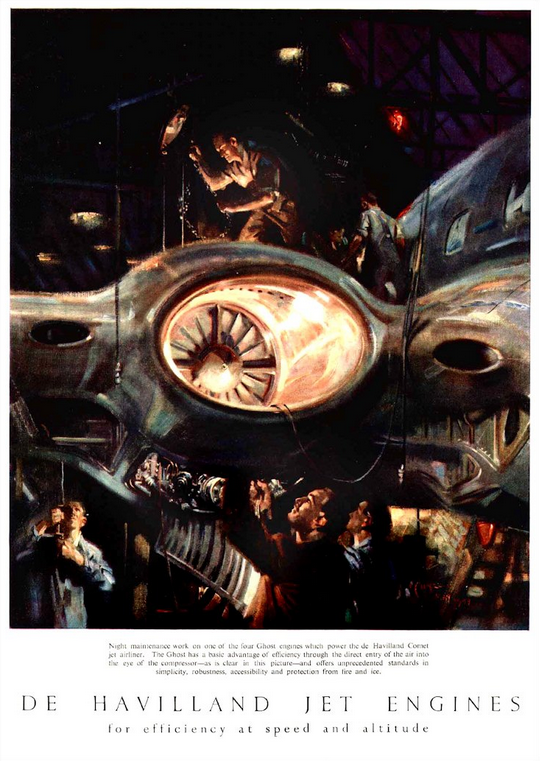
The Comet I had a maximum cruising speed of 490 miles per hour (789 kilometers per hour), True Air Speed, and operating altitude of 35,000 to 40,000 feet (10,668–12,192 meters). The airliner’s fuel capacity was 6,050 Imperial gallons (27,504 liters, or 7,266 U.S. gallons) giving a practical stage length of 2,140 miles (3,444 kilometers). The maximum range was 3,860 miles (6,212 kilometers).
Twelve DH.106 Comet 1 airliners were built.
The de Havilland Comet was the first commercial jet airliner and its introduction had revolutionized the industry. The two disasters were a blow from which the company never really recovered.
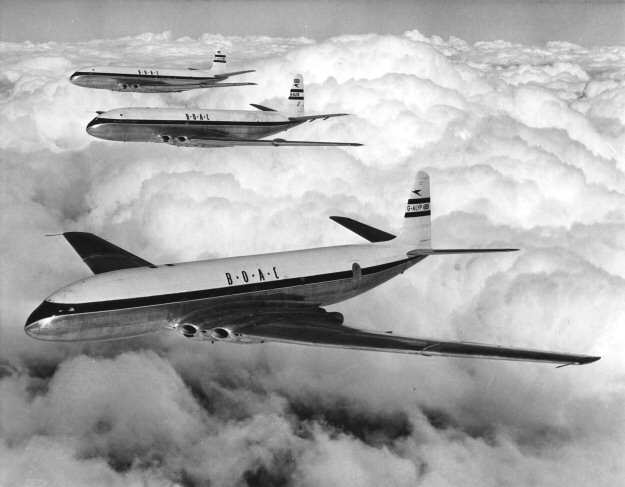
¹ MINISTRY OF TRANSPORT AND CIVIL AVIATION, CIVIL AIRCRAFT ACCIDENT. Report of the Court of Inquiry into the Accidents to Comet G–ALYP on 10th January, 1954 and Comet G–ALYY on 8th April, 1954, Part IX: THE COURT’S CONCLUSION AS TO CAUSE OF ACCIDENT, at Pages 46–47
© 2024, Bryan R. Swopes